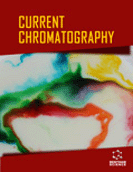[1]
Andrasko, J. Changes in composition of ballpoint pen inks on aging in darkness. J. Forensic Sci., 2001, 47(2), 324-327.
[2]
Grim, D.M.; Siegel, J.; Allison, J. Evaluation of laser desorption mass spectrometry and UV accelerated aging of dyes on paper as tools for the evaluation of a questioned document. J. Forensic Sci., 2002, 47(6), 1-9.
[3]
Weyermann, C.; Kirsch, D.; Vera, C.C.; Spengler, B. Photofading of ballpoint dyes studied on paper by LDI and MALDI MS. J. Am. Soc. Mass Spect., 2006, 17, 297-306.
[4]
Weyermann, C.; Spengler, B. The potential of artificial aging for modeling of natural aging processes of ballpoint ink. Forensic Sci. Int., 2008, 180, 23-31.
[5]
Weyermann, C.; Kirsch, D.; Vera, C.C.; Spengler, B. Evaluation of the photodegradation of crystal violet upon light exposure by mass spectrometric and spectroscopic methods. Forensic Sci. Int., 2009, 54(2), 339-345.
[6]
Lalli, P.M.; Sanvido, G.B.; Garcia, J.S.; Cosso, R.G.; Maia, D.R.J.; Zacca, J.J.; Maldaner, A.O.; Eberlin, M.N. Fingerprinting and aging of ink by easy ambient sonic-spray ionization mass spectrometry. Analyst , 2010, 135, 745-750.
[7]
Aginsky, V.N. Measuring ink extractability as a function of age – why the relative aging approach is unreliable and why it is more correct to measure ink volatile components than dyes. Int. J. Forensic Doc. Exam., 1998, 4(3), 214-230.
[8]
Koenig, A.; Magnolon, S.; Weyermann, C. A comparative study of ballpoint ink aging parameters using GC/MS. Forensic Sci. Int., 2015, 252, 93-106.
[9]
Koenig, A.; Bügler, J.; Kirsch, D.; Köhler, F.; Weyermann, C. Ink dating using thermal desorption and gas chromatography/mass spectrometry: comparison of results obtained in two laboratories. J. Forensic Sci., 2015, 60(S1), 152-161.
[10]
San Román, I.; Bartolomé, L.; Alonso, M.L.; Alonso, R.M.; Ezcurra, M. DATINK pilot study: An effective methodology for ballpoint pen ink dating in questioned documents. Anal. Chim. Acta, 2015, 892, 105-114.
[11]
Diaz-Santana, O.; Vega-Moreno, D.; Conde-Hardisson, F. Gas chromatography-mass spectrometry and high-performance liquid chromatography-diode array detection for dating of paper ink. J. Chromatogr. A, 2017, 1515, 187-195.
[12]
Koenig, A.; Weyermann, C. Ink dating, part I: Statistical distribution of selected ageing parameters in a ballpoint inks reference population. Sci. Justice, 2018, 58(1), 17-30.
[13]
Stewart, L.F. Ballpoint ink age determination by volatile component comparison - a preliminary study. J. Forensic Sci., 1985, 30(2), 405-411.
[14]
Lociciro, S.; Dujourdy, L.; Mazzella, W.; Margot, P. Dynamic of the ageing of ballpoint pen inks: Quantification of phenoxyethanol by GC-MS. Sci. Justice, 2004, 44(3), 165-171.
[15]
Weyermann, C.; Kirsch, D.; Vera, C.C.; Spengler, B. A GC/MS study of the drying of ballpoint pen ink on paper. Forensic Sci. Int., 2007, 168, 119-127.
[16]
Brazeau, L.; Gaudreau, M. Ballpoint pen inks: The quantitative anaysis of ink solvents on paper by solid-phase microextraction. J. Forensic Sci., 2007, 52(1), 209-215.
[17]
Berger-Karin, C.; Hendriks, U.; Geyer-Lippmann, J. Comparison of natural and artificial aging of ballpoint inks. J. Forensic Sci., 2008, 53(4), 989-992.
[18]
Bügler, J.H.; Buchner, H.; Dallmayer, A. Age determination of ballpoint pen ink by thermal desorption and gas chromatography-mass spectrometry. J. Forensic Sci., 2008, 53(4), 982-988.
[19]
Diaz-Santana, O.; Conde-Hardisson, F.; Vega-Moreno, D. Comparison of the main dating methods for six ball-point pen inks. Microchem. J., 2018, 138, 550-551.
[20]
Weyermann, C.; Almog, J.; Bügler, J.; Cantu, A.A. Minimum requirements for application of ink dating methods based on solvent analysis casework. Forensic Sci. Int., 2011, 210, 52-62.
[21]
Carvalho, C.M.B. Analysis of the initial concentration of solvents from ballpoint pen ink. Revista Brasileira de Ciências Policiais, 2014, 5(1), 65-96.
[22]
Weyermann, C.; Schiffer, B.; Margot, P. A logical framework to ballpoint ink dating interpretation. Sci. Justice, 2008, 48, 118-125.
[23]
Wang, J.; Luo, G.; Sun, S.; Wang, Z.; Wang, Y. Systematic analysis of bulk blue ballpoint pen ink by FTIR spectrometry. J. Forensic Sci., 2001, 46(5), 1093-1097.
[24]
Silva, C.S.; Borba, F.S.L.; Pimentel, M.F.; Pontes, M.J.C.; Honorato, R.S.; Pasquini, C. Classification of blue pen ink using infrared spectroscopy and linear discriminant analysis. Microchem. J., 2013, 109, 122-127.
[25]
Sharma, V.; Kumar, R. Fourier transform infrared spectroscopy and high performance thin layer chromatography for characterization and multivariate discrimination 25of blue ballpoint pen ink for forensic applications. Vibrat. Spect., 2017, 92, 96-104.
[26]
Liu, Y.; Yu, J.; Xie, M.X.; Chen, Y.; Jiang, G.Y.; Gao, Y. Studies on the degradation of blue gel pen dyes by ion-pairing high performance liquid chromatography and electrospray tandem mass spectrometry. J. Chrom. A, 2006, 1125(1), 95-103.
[27]
Confortin, D.; Brustolon, M.; Franco, L.; Neevel, H.; Bommel, M.R. Crystal violet: Study of the photo-fading of an early synthetic dye in aqueous solution and on paper with HPLC-PDA, LCMS and FORS. J. Phys., 2010, 231012011
[28]
Freidenfelds, V.; Mekss, P. The possibilities of determination of the relative age of ballpoint pen ink entries by high performance liquid chromatography. Latv. J. Chem., 2012, 3, 242-248.
[29]
Williams, M.R.; Moody, C.; Arcenoux, L.; Rinke, C.; White, K.; Sigman, M.E. Analysis of black writing ink by electrospray ionization mass spectrometry. Forensic Sci. Int., 2009, 191, 97-103.
[30]
Carvalho, C.M.B.; Ortiz, R.S.; Limberger, R.P. Figures of merit evaluation of gc/ms method for quantification of 2-phenoxyethanol from ballpoint pen ink lines and determination of the influence of support paper on solvent extraction. Química . Nova, 2019, 42(1), 42-48.
[31]
Andrasko, J.; Kunicki, M. Inhomogeneity and aging of ballpoint pen inks inside of pen cartridges. J. Forensic Sci., 2005, 50(3), 1-6.
[32]
Grim, D.M.; Siegel, J.; Allison, J. Does ink age inside of a pen cartridge? J. Forensic Sci., 2002, 47(6), 1294-1297.
[33]
Cantu, A.A. A study of the evaporation of a solvent from a solution - application to writing ink aging. Forensic Sci. Int., 2012, 219, 119-128.
 21
21 7
7 1
1 1
1

















